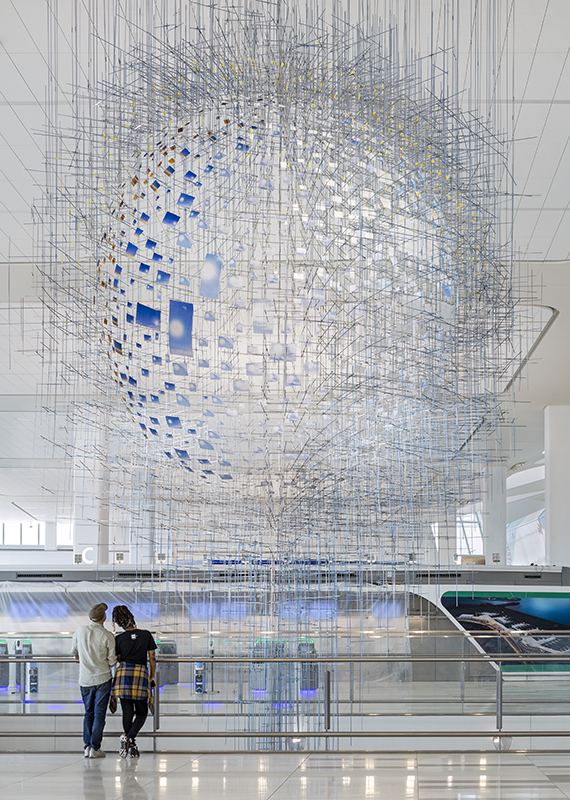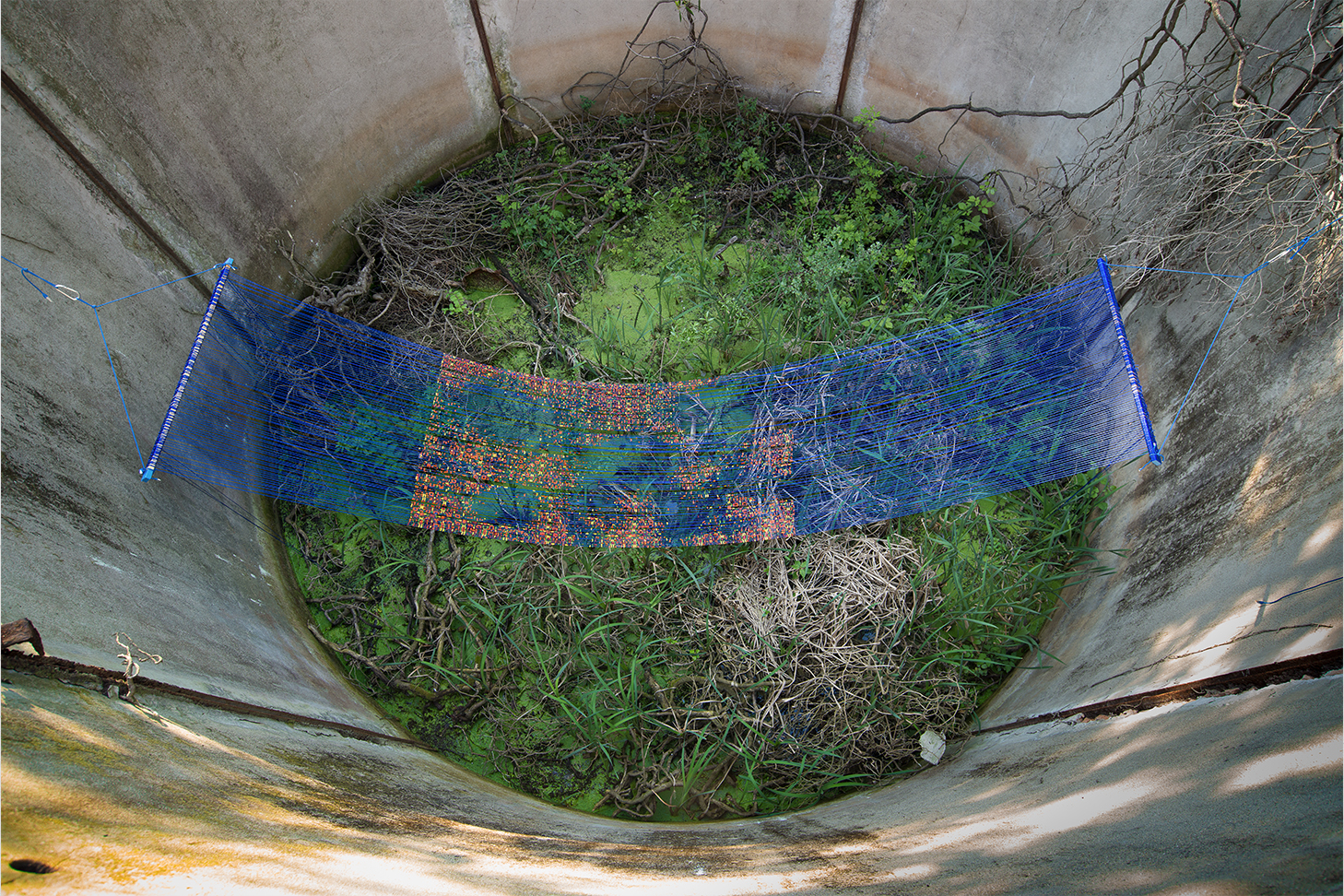 Everything, everywhere, all at once—not the movie.
Everything, everywhere, all at once—not the movie.
In our modern world, the ability to rewind, fast forward, skip through, speed up, and slow time feels like natural and tangible concepts. We overlay timelines and narratives, we edit and alter our memories, and we use various interfaces to create, engage, like, follow, and share our experiences with the world around us. Technology has enabled our minds to process information at quantum rates, giving us control to break through time, space, and dimension. Yet, more than ever, society has an instinctual urge to pause, take a breath, and grasp at stillness.
The underlying anxieties created through the struggle to evolve with rapidly new advancements in technology are overwhelming to say the least. The frenzied day-to-day lives of a globalized people rush by, blurring every image that forms. In this blurred formless metaphor of the everyday commotion, there are elements that break through—focused and sharp. These things can appear intentionally through ritual, performance, or contemplation, or unintentionally, by accident, or at random.
To me, Sarah Sze’s practice deals with this condition, seeking intimacy in moments where the anxieties of the technological sublime exit, and the power of now enters. In her cyclical alchemy of image to object, object to space, space to memory, and memory back to image— the work emerges from chaos as tranquil, undisturbed pockets of time and space.
Through sculpture, installation, paint, video projection, sound, and various media, Sze’s spatial interventions force reflection and contemplation with the busied physical, technologic, and conceptual realities within which we co-exist. Meticulously (de)constructed, the concepts laid out in these manifested blueprints feel intentionally architectural—poetically calling attention to their own material self-awareness while constructing spectacle out of the deceptive illusions and perspectives of time, memory, and fragility.
In her work Shorter than the Day (2019-2020), the role of scale transcends aesthetic, assuming a functional relationship with its audience. As bustling travelers move through Terminal B in New York City’s LaGuardia Airport, their journey is met with an awe-inspiring spectacle mounted in midair. This monumental two-level installation, exploding with material prowess, creates a gravitational pull beckoning audiences closer. As viewers draw nearer, the facade of the intersection of art and technology crumbles, giving way to an intimate and human experience: thousands of lo-fi photographs, each capturing a fragment of the New York City sky at different times of the day, converge as nodes within the mesmerizing wireframe of a spherical structure. I am drawn to this piece because its subversion of expectation in an environmental context that assumes such corporate rigidity and commercial priority—it creates a sense of nostalgia, personal connection, and an emergence of heightened self-awareness.
In an Architectural Digest article about the piece, Sze is quoted saying, “An airport is a portal into the displacement of time and space.” Within this liminal space, her art becomes a conduit, a portal through which viewers navigate the boundaries of their own temporal and spatial existence.
 The Last Garden (2015) was an installation hidden within a Venetian courtyard garden. When speaking about the objects in the piece, Sze refers to them as a means to feel absence. They’re framing devices used to orient viewers to non-physical material like time, space, fragility, and reflection. As audiences delicately tiptoe around these assemblages, they discover seeded artifacts like a hammock made of yarn, strategically positioned mirrors, and branches that have been altered with painter’s tape and adhesive. Time surrenders, space expands, and specific shades of internal stillness are revealed.
The Last Garden (2015) was an installation hidden within a Venetian courtyard garden. When speaking about the objects in the piece, Sze refers to them as a means to feel absence. They’re framing devices used to orient viewers to non-physical material like time, space, fragility, and reflection. As audiences delicately tiptoe around these assemblages, they discover seeded artifacts like a hammock made of yarn, strategically positioned mirrors, and branches that have been altered with painter’s tape and adhesive. Time surrenders, space expands, and specific shades of internal stillness are revealed.
In Things Caused to Happen (Oculus) (2023), the same rules seem to apply. Time, space, material, and form are locked in a state of transformation that is being used as a medium. Integrating digital video and projection, Sze fragments the past onto torn pieces of paper, many not much larger than an inch long, calling out a technological perspective, our ever-evolving relationships with artifacts of memory, and subsequently the time and space around it. In this gesture, she not only highlights the malleability of our connections to objects and images but also delves into the complexities of our contemporary digital existence.
In my own artistic practice, I spend a lot of time thinking about life in mixed realities. More specifically, I look to find ways to question and challenge assumptions about a world that is becoming more reliant on technologies that are getting harder to understand. As our lives speed up and require us to jump across more applications, channels, and interfaces, I want to slow down and have deeper contemplations of our relationships with reality.
“Aesthetics of Real,” an ongoing body of work I’ve been producing since 2013, explores technologies like artificial intelligence (AI), augmented/virtual reality, projection mapping amongst other interactive and immersive experiences and performances, investigating multiple platforms and meanings of contemporary reality. Though mediated through technology and fiction, the artworks and their various dimensions subvert their way into feeling real—or at least real enough to spark some critical conversation.
Nested within “Aesthetics of Real” is a series called Water Wars (2022). Water Wars is a machine learning/AI-driven art piece created from a trained model of digitally painted and generated images. The algorithm transforms itself into various compositions, directed by prompts that unveil a sense of luxury, menace, beauty, and artifice. I’ve presented the generated results in different forms, from prints framed by neon acrylic to video projections that morph across varied aspect ratios, and interactive installations.
Conceptually, Water Wars grapples with the profound impact of technology on the environment, as it pertains to society’s instinctual fixation on superficial beauty and leisure. Inspired by the elegant yet distorted painting style of Francis Bacon, the subjects in these desert landscapes appear to melt within pools of plastic being fueled by the process that rendered them. The iterations each present a new technology that is flooding everyday life, but with a nuance and depth not associated with AI generated work.
As I reflect on Sarah Sze’s work, I am inspired by the seamless relationship between objects, time, and space, and how they collectively impact our lived realities. Within the sanctuaries she creates, audiences may find visions, memories, and heightened awareness. The boundaries between the past, present, and future dissolve around intricate assemblages of objects and projections, and the distractions of the external world are presented with such density that they may even slip out of focus.
Her installations invite us to consider our shifting relationship with the present moment and the objects that create it, while revealing the world through a hyperactive, media-drenched vantage point. As an artist working in new and emerging media, I am awed by how her work amplifies the chaos of our mental and physical existence, beckoning curiosity and acceptance of our maximalist realities, while simultaneously fostering environments of solace and critical introspection.
IMAGES, TOP: Sarah Sze (b. 1969). Shorter than the day, 2020. Powder-coated aluminum and steel 48 x 30 x 30 feet (14.6 x 9.1 x 9.1 m). Commissioned by La Guardia Gateway Partners in partnership with Public Art Fund. Image courtesy of the artist.
MIDDLE: Sarah Sze (b. 1969). The Last Garden (Landscape of Events Suspended Indefinitely) (Hammock), 2015. Acrylic, string, cord, metal, stone, and photograph, 115 x 190 x 42 inches (292.9 x 482.6 x 106.6 cm). Image courtesy of the artist.
BOTTOM: Taylor Cleveland (b. 1992). Water Wars #010, #011, and #007, 2022. Digital render, dimensions variable. Water Wars (Lumia Festival). Multi-channel video. Merrill Ellis Intermedia Theatre at University of North Texas. Image courtesy of the artist.